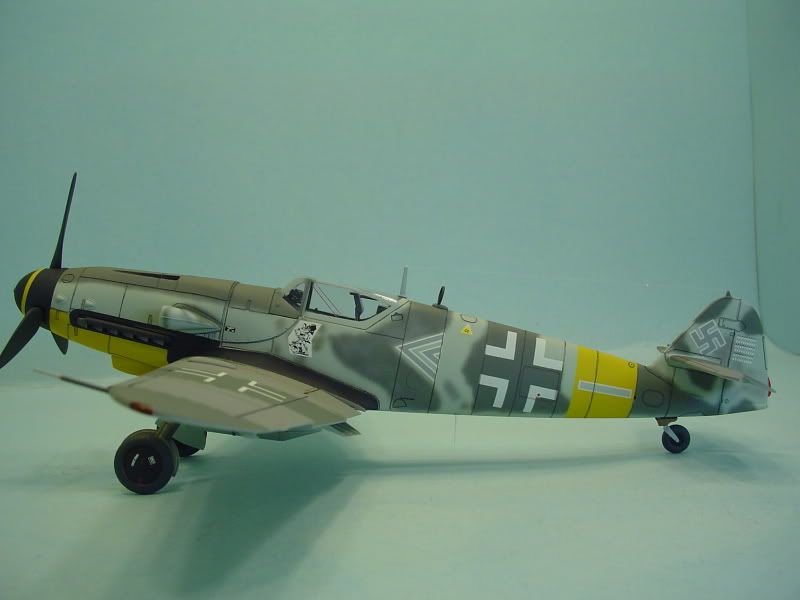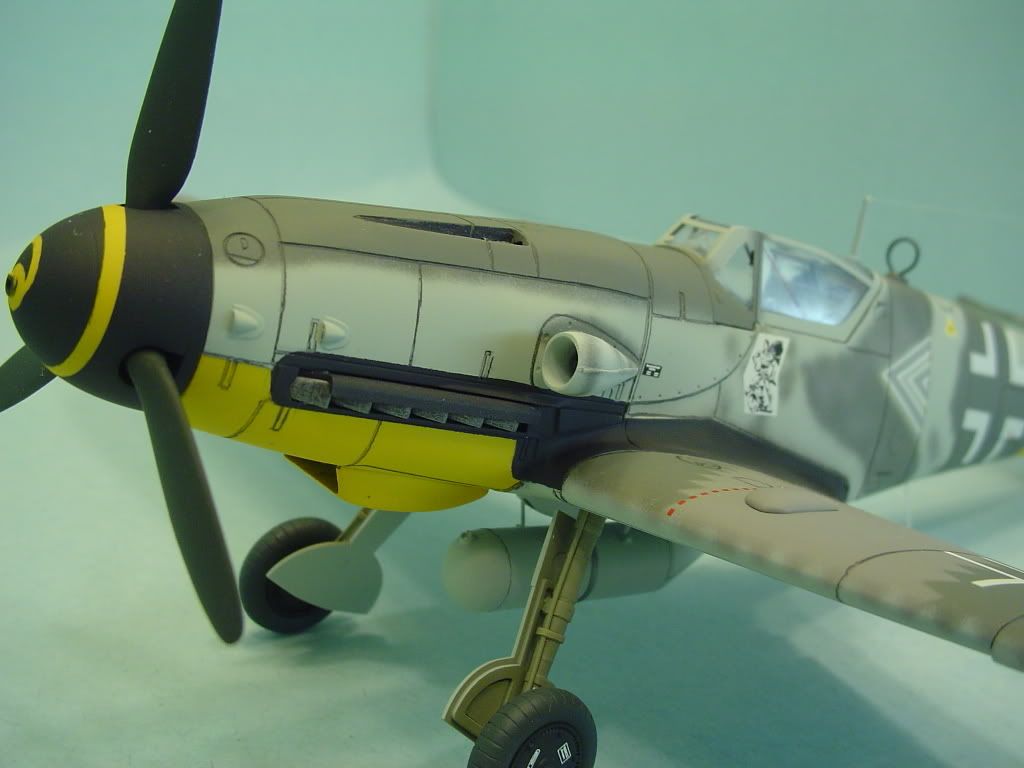This is my recently completed Hasegawa 1/32 ME-109G-14/AS, converted from the 109G-10. I began this kit in 2008 for the Reich Defender GB, and put it aside after becoming frustrated with it. I was having difficulty getting the fuselage seams sorted out, and finally gave up on it. I actually broke the thing in half right behind the cockpit, and then split the fuselage lengthwise, removing the cockpit for use on a future kit. One day a while back, I decided to try it again. I used a ton of CA glue to glue it all back together. A daunting task to begin with as the now broken fuselage was a mess- wish I had taken photos of it then but I didn’t as I didn’t want to document the failure!
Built mostly OOB, adding seatbelts, antenna, and brake lines. Painted with Tamiya acrylics, and decals from Eagle Editions. I also drilled out the kit exhausts, opened up the four small scoops on the nose, the recesses in the main gear bays, re-positioned the elevators, added bracing wires inside the radiators and oil cooler. A few other small scratchbuilt details were added like parts for the gunsight, in-cockpit fuel line, canopy release lever, etc.
The main landing gear and wheels are painted red, as found on a number of these aircraft. While the exact reason is not certain, many speculate that they were done this way to alert the ground crew that the engines on these machines required 100 octane (C3) fuel.
Comments and constructive criticism welcomed!
!(http://i132.photobucket.com/albums/q40/daywalker750/Model pics/Bf-109/Bf-109G-10 large scale/002-6.jpg)
!(http://i132.photobucket.com/albums/q40/daywalker750/Model pics/Bf-109/Bf-109G-10 large scale/003-2.jpg)
!(http://i132.photobucket.com/albums/q40/daywalker750/Model pics/Bf-109/Bf-109G-10 large scale/004-1.jpg)
!(http://i132.photobucket.com/albums/q40/daywalker750/Model pics/Bf-109/Bf-109G-10 large scale/001-5.jpg)
!(http://i132.photobucket.com/albums/q40/daywalker750/Model pics/Bf-109/Bf-109G-10 large scale/005-1.jpg)
!(http://i132.photobucket.com/albums/q40/daywalker750/Model pics/Bf-109/Bf-109G-10 large scale/006-1.jpg)
!(http://i132.photobucket.com/albums/q40/daywalker750/Model pics/Bf-109/Bf-109G-10 large scale/007-2.jpg)


